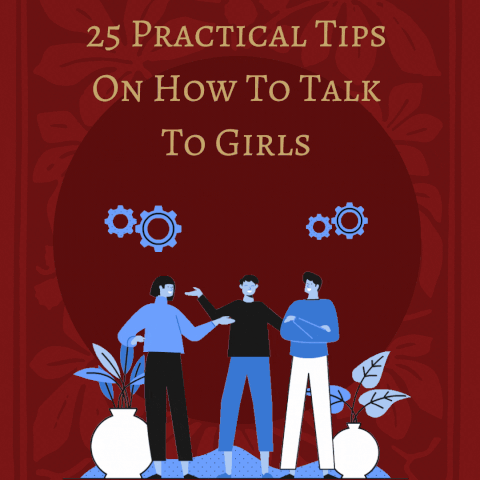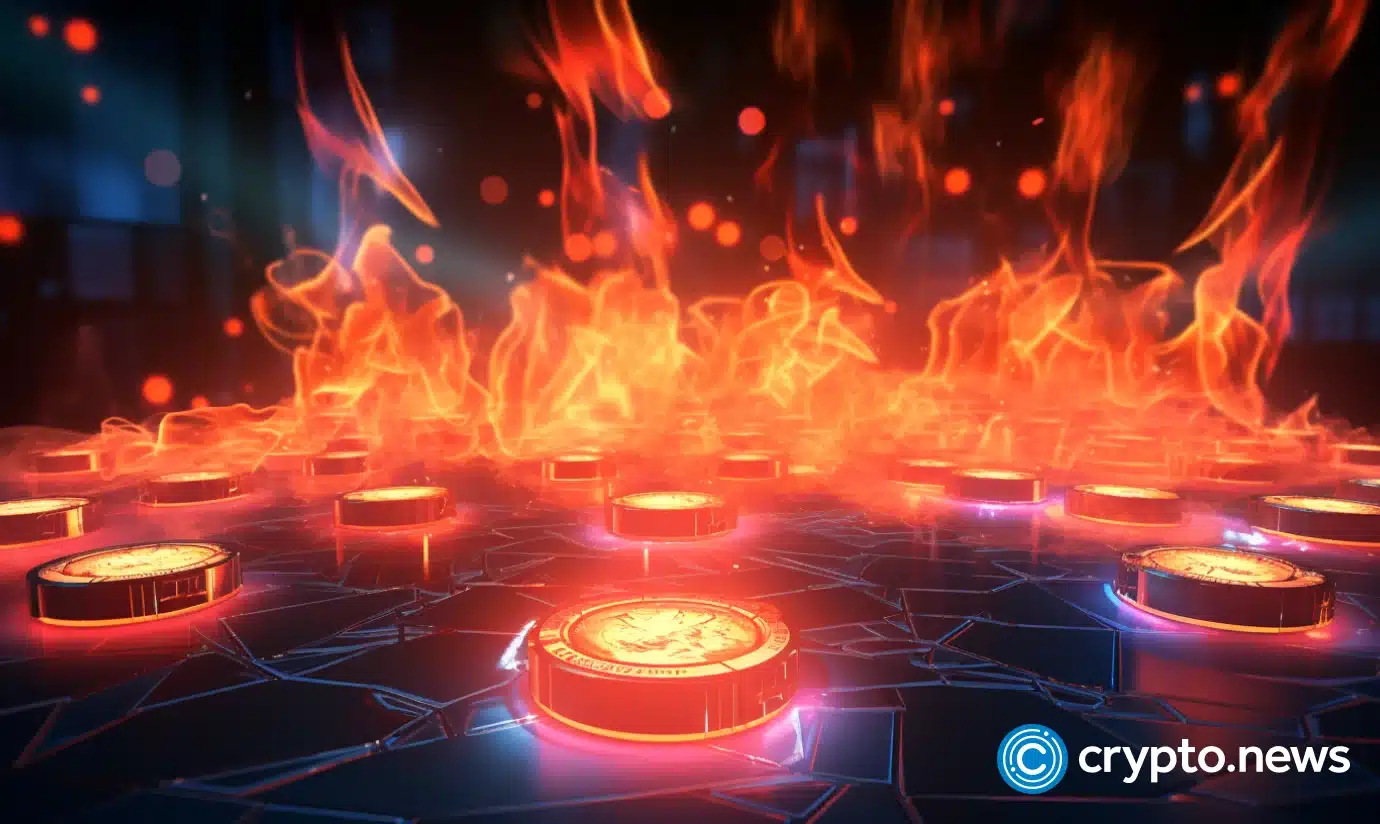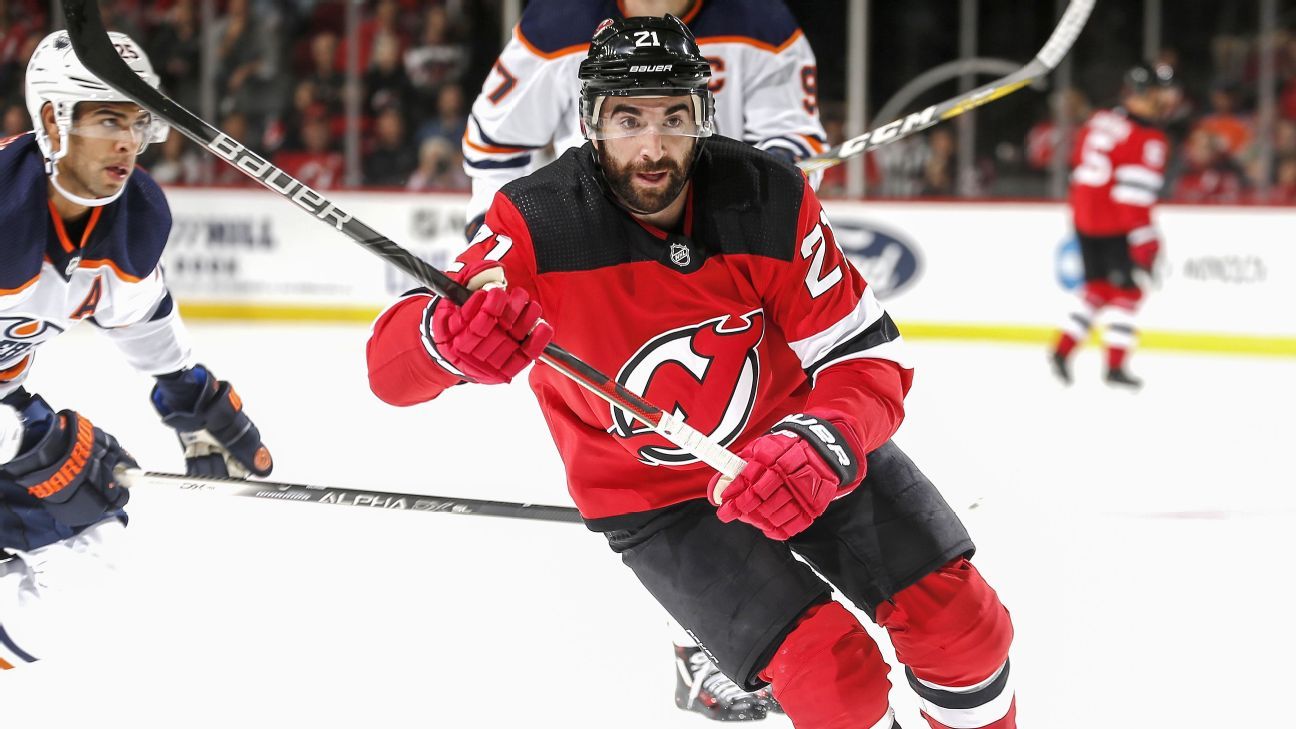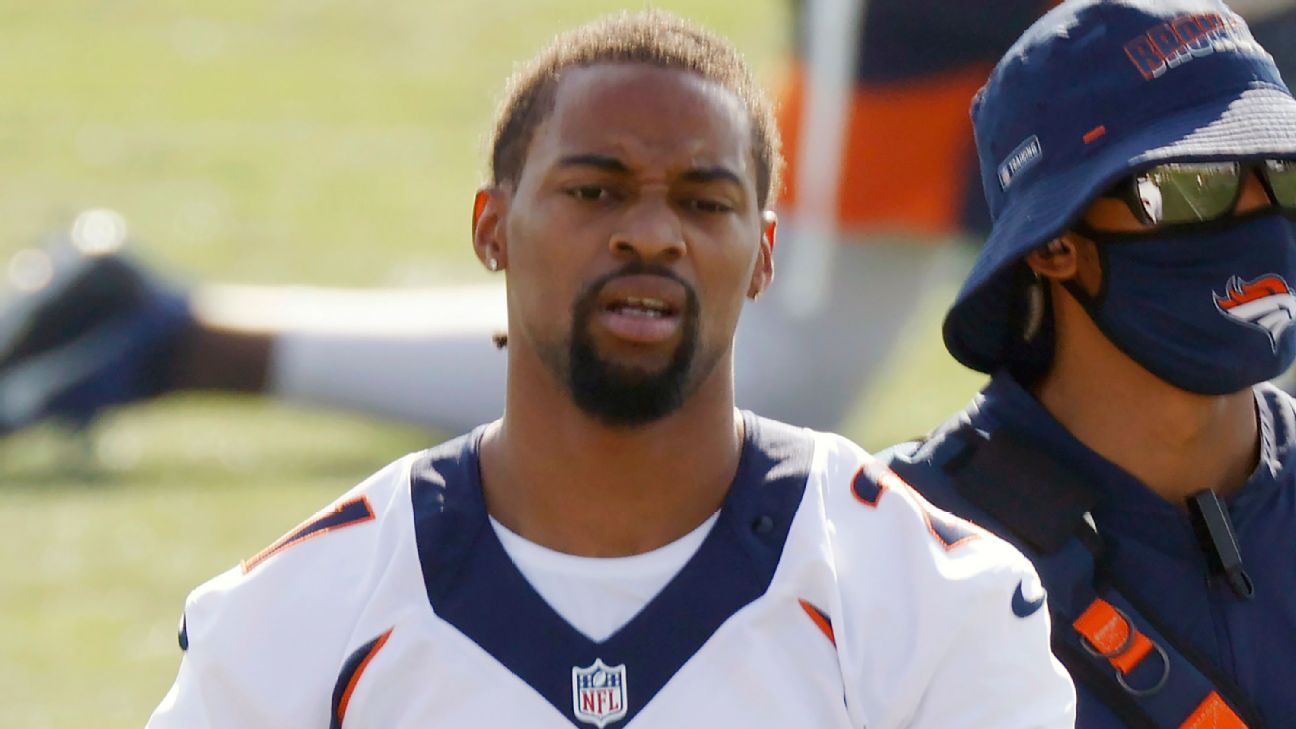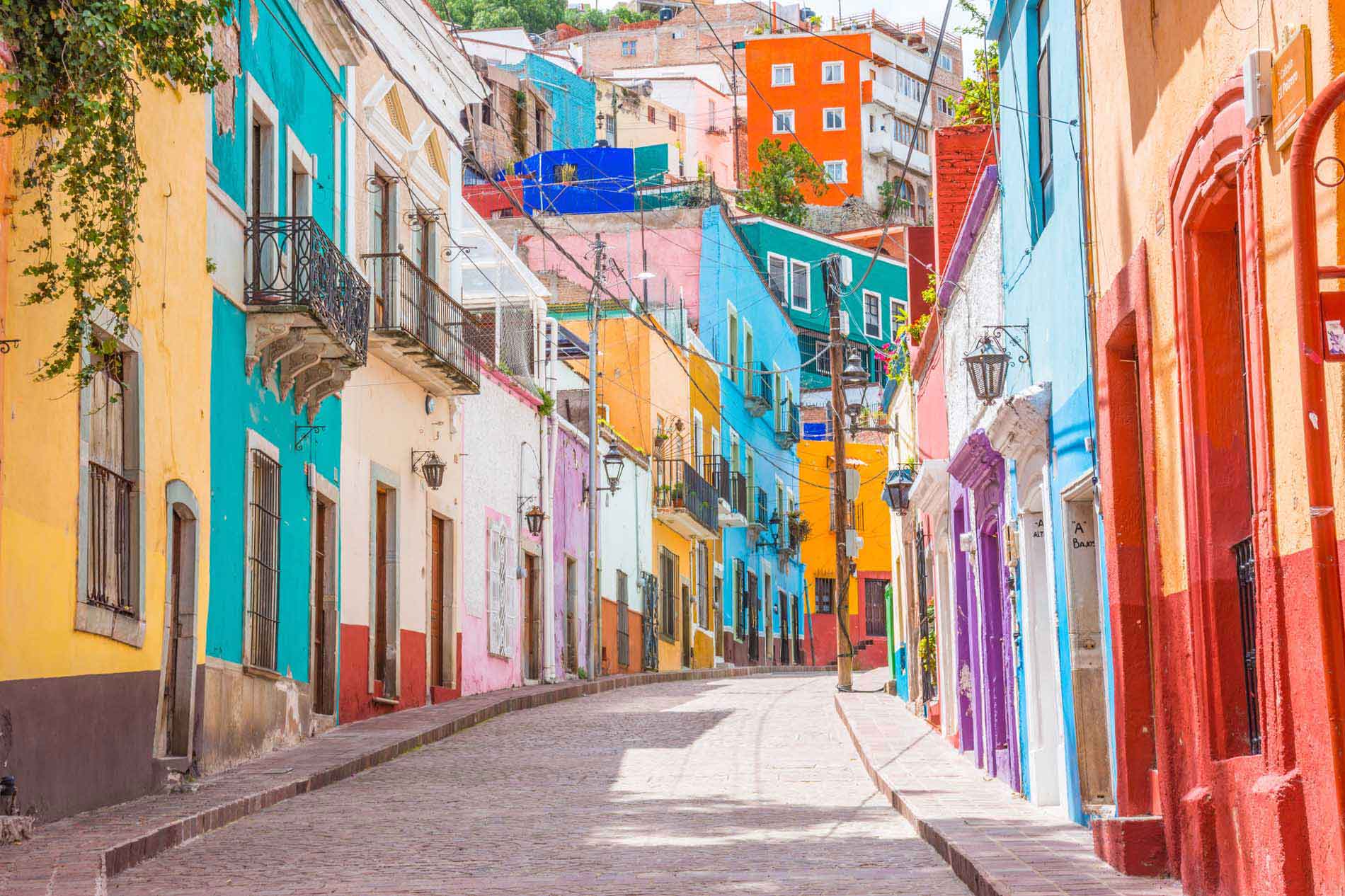This Spiritual Sign Has A Lot Of Misconceptions—But It's Nothing To Fear
Here's what it really means.
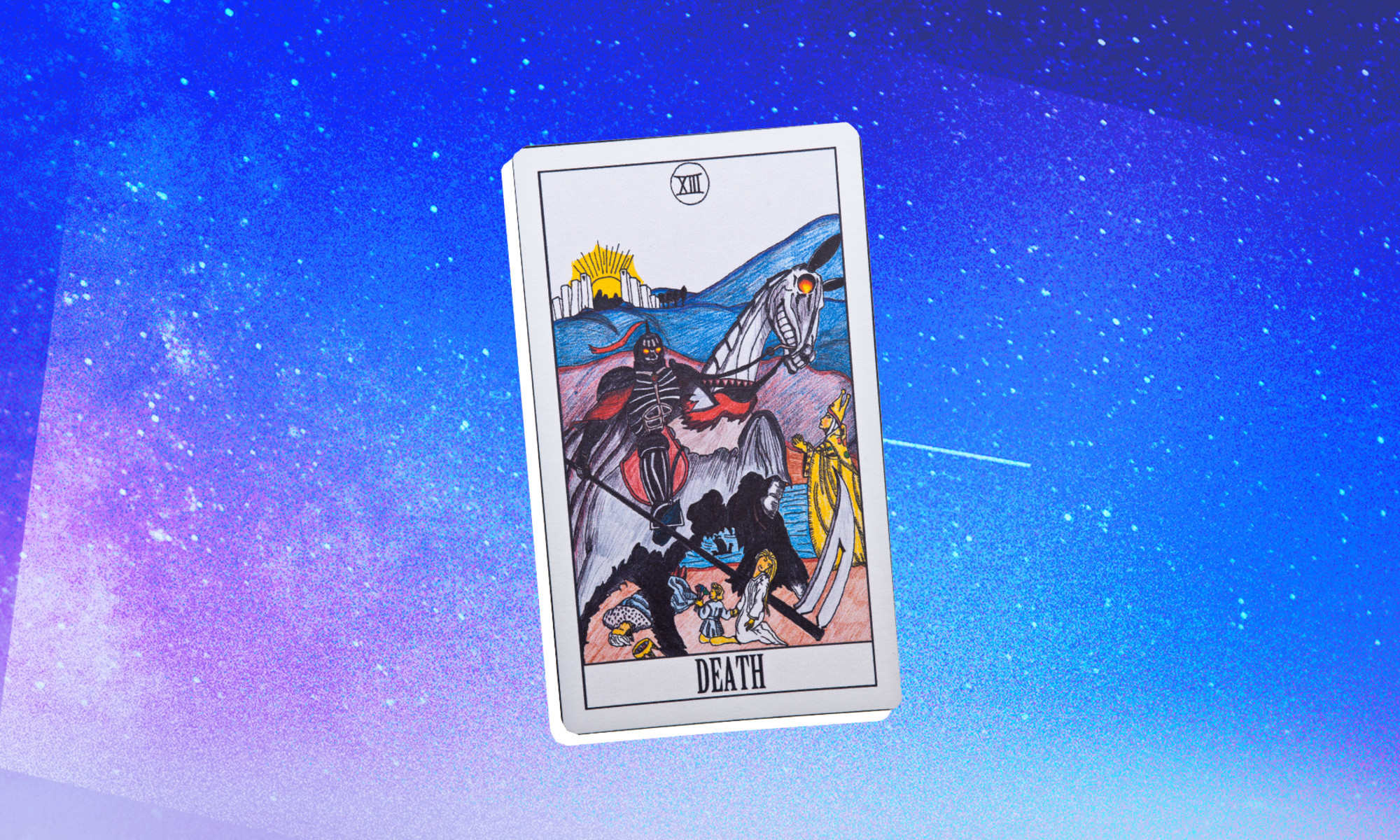
Image by mbg Creative / Various, iStock April 11, 2023 Our editors have independently chosen the products listed on this page. If you purchase something mentioned in this article, we may Few cards in a traditional tarot deck appear more ominous at first glance than the Death card. Well, it turns out that there's more to the 13th of the 22 major arcana cards than you might assume—and no, it's not a death sentence. Here's everything you need to know about the death card in your tarot deck.
Advertisement
This ad is displayed using third party content and we do not control its accessibility features.
What does the Death card mean?
You can think of the Death card as symbolizing a more metaphorical death, according to tarot expert and author of the Magical Self-Care Tarot Deck Leah Vanderveldt. "This is a card of big changes, transformation, and, yes, endings," she says. "It's a big piece in the process of personal evolution, in which we release old patterns. It's a shedding of the skin (aka your ego), to grow into a new version of yourself."
Death represents the shedding required to continue progressing along one's path, Vanderveldt notes. "There's a feeling of grief present, along with a fear of the unknown that's difficult to make peace with in the moment, but if you can stick it out, there's a new beginning on the other side."
Other cards in the tarot deck carry a similar message, Vanderveldt adds, explaining that the 10 of Swords is like a mini Death card: "This card says: It's time to do it differently. Once you decide to let go of a damaging negative thought loop, you can begin a new path."
Additionally, the cards on either side of Death, The Hanged Man (XII) and Temperance (XIV), are also part of the "death journey," in which we prepare for an ending by surrendering and releasing fears of judgment (the Hanged Man), and then go through a rebirth by transmuting our past pain (Temperance).
Advertisement
This ad is displayed using third party content and we do not control its accessibility features.
History and symbolism of the Death card
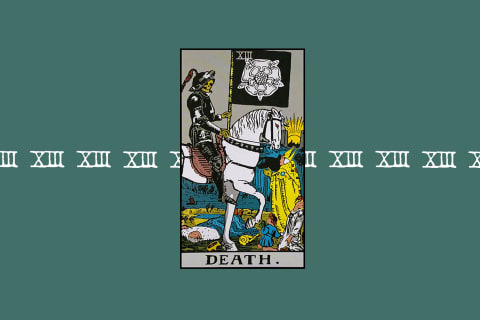
One of the best ways to interpret tarot cards is by understanding their symbolism and imagery. As Vanderveldt explains, symbolism will vary from deck to deck, but in the traditional Smith Rider Waite imagery, the Death card features a knight on horseback, steadily moving ahead. "There’s people in the scene that call back to figures in other cards, all falling underfoot of the death, suggesting no one is immune from change, loss, transformation, and yes, death," she explains.
Additionally, the armored skeleton knight carries a flag with a white rose, which Vanderveldt notes historically represents the rose of the house of York, but also represents life and renewal in general.
We alo see two pillars and the sun setting (or rising?), with the sun being "a nod to the cyclical nature of life, and knowing that even though the sun is setting on one thing right now, it will rise again tomorrow," she tells mindbodygreen.
And those same pillars appear in The Moon card as well, indicating a threshold we must cross, Vanderveldt explains. "We often don’t know exactly what forms our transformation will take, but must trust that we can withstand the darkness before the dawn," she says.
Lastly, the Death card is often associated with Scorpio, a sign all too familiar with death and rebirth. Scorpio season itself is the time of year in the northern hemisphere where "the leaves are dying and falling away and we’re preparing to go inward in the winter," Vanderveldt notes, adding that death is about the cycles that we all inevitably go through, where the old ways and status quo must fall away.
Thinking About Trying Keen? Here's What To Know First, Based On My Experience.

Common misconceptions and fears
The Death card tends to get a bad rep, because who really wants a prophecy of death put in front of them? The good news is, it's not a death prophecy—or if it is, we're talking about a metaphorical death or ending of some sort. "More often it points to a death you’ve already experienced and are grieving, and most often as endings and transitions," Vanderveldt tells mindbodygreen.
She adds that many of the “scary” cards of the deck often play on our very normal human fears in order to get us to take them seriously. When we see the death card, she says, we know there is a very noticeable ending happening.
"One of the things to remember about the Death card is that it’s number 13 in the Major Arcana, but there are eight cards that come after it, making this a significant turning point, but certainly not the end," Vanderveldt explains.
And remember, she adds, just like the leaves that fall to the ground in Scorpio season, our past experiences serve as "compost" for new life to sprout. "The tree itself doesn’t die, it goes dormant for a season, thriving underground, and will reemerge when the time is right," Vanderveldt notes.
Interpreting when the Death card shows up
The Death card may appear to you in any kind of reading, whether you're asking about a past situation, or a future possibility. The idea is that it's signifying to you that something needs to end or dramatically change in order to move forward. As Vanderveldt puts it, this card most often comes up in readings to signify something is ending or changing and a new cycle is taking hold.
"It can speak to the importance of the grief process and letting things go. There’s often an urging to accept that things are changing but also accept your feelings about it—the acceptance loosens our grip so things can take their course," she tells mindbodygreen.
The Death card can also signify transformation. "Like a butterfly emerging from a chrysalis, the caterpillar they were has been reformed, recycling its previous form," Vanderveldt explains.
Another way to think about this card is that it serves as a dramatic reminder to bow to the impermanence of life—to appreciate what’s here now, and the life you have in this present moment, according to Vanderveldt. "Beauty in all things is ever changing, but that’s why it’s beautiful," she adds.
Advertisement
This ad is displayed using third party content and we do not control its accessibility features.
What does it mean for love & relationships?
When pulled upright:
To pull a card about endings might seem alarming if you're in the middle of a reading about your relationship, but it may not always translate to an ending of the entire relationship; it could be the end of a phase in a relationship.
"There can be lots of endings and changes within a relationship that have nothing to do with the relationship itself ending," Vanderveldt says. "It could mean an evolution as a couple—like making a commitment, moving, having a kid—that could challenge your identity. Or it could be an urging to let go of something in order to move forward. You're being asked to change the way you've been doing something in order to open up new possibilities for your love life and/or relationship."
The cards come alive through your own experiences and how you relate them to what you pull, so ask yourself, What needs to change? when you get this one. You can also pull more cards for additional guidance, Vanderveldt adds.
Advertisement
This ad is displayed using third party content and we do not control its accessibility features.
When pulled in reverse:
To pull Death in reverse in a relationship/love reading suggests something is keeping you in a cycle of fear or anxiety, according to Vanderveldt. "What are you holding onto in your relationship? What are you resisting and why? It might be the reverberations of something that happened in another relationship or with your current partner in the past, but it's affecting your present."
In this case, she says the card is asking you to really look at what's coming up for you, acknowledge it, and hopefully let go so you can move forward.
What does it mean for professional & financial matters?
When pulled upright:
If you asked the cards a question related to your career or finances and you pulled Death upright, it likely signals that something in that sphere of your life needs to change or end. It could be the job entirely or some facet of that job like a particular project.
"Whatever it is, know that it's all part of your journey," Vanderveldt cautions. "Often we can't see the benefit of some career choices and shifts until we've reached a place where we feel like we're in our flow, doing what we're meant to do. Know this is a trail marker on that path, sending you in a new direction that you might not understand yet."
Advertisement
This ad is displayed using third party content and we do not control its accessibility features.
When pulled in reverse:
To pull Death in reverse suggests a resistance to change—like a grasping. Vanderveldt recommends asking, "Are you staying in a job or personal scenario out of fear rather than growth?" This card implies you may need to "get real about what you really want out of your career and/or bank account and make a plan," she adds.
And odds are, if you're receiving a reading about your professional life, you likely do want to see growth and improvement. If you pulled Death in reverse, it's time to open yourself up to the idea of change, and according to Vanderveldt, acknowledge that "staying stuck will feel worse over the long term than the fear of change and the unknown that you're feeling right now.
What does it say about challenges that lie ahead?
When pulled upright:
As a card that's all about endings, this one can definitely mean some challenges and changes lie ahead. How you respond to or overcome those challenges and changes is really up to you. "Something will come to an end and you'll need to adjust," Vanderveldt says, "and while change is never easy, it's a necessary and inevitable part of life."
And the nice thing about tarot is, it's a call to action. "Do you want to fight it, or do you want to work with it to proactively craft your life? Your challenge is to face it with as much grace as you can," she adds.
When pulled in reverse:
Again, pulling this card in reverse suggests resistance. Whatever it is that's coming up for you with regard to challenges you may be facing, Vanderveldt says it's time to face it: "Being aware of your inclination to kick and scream in opposition to change is useful information because you can start to notice when you're doing it and detach a little bit."
We're all human, so be patient and gentle with yourself as you adjust to the changes to come. Reassure yourself that you are resilient and capable. "Make a list now of all the things that make you feel supported, so you can refer back to it when things get tough," Vanderveldt suggests.
FAQs:
What colors are death tarot?
The Death card features black and white colors, with black representing grief and mourning, as well as mystery, and white representing purity and transformation. The flower depicted on the flag has five white petals, which represent purity or purification (white) and change (the number five).
What is the 12th card in tarot?
The 12th card in tarot is the Hanged Man, which represents letting go, surrendering, sacrifice, and seeing things from a different perspective.
What is the 14th card in tarot?
The 14th card in tarot is Temperance, which represents moderation, balance, self-evolution, and avoiding extremes.
What tarot card is Scorpio?
Scorpio is often associated with the Death card in tarot, as both relate to themes around death, rebirth, endings, and transformation.
The takeaway.
Pulling the Death card in a tarot deck may seem unnerving, but the truth is, this card can hold a lot of insight into where your life needs change moving forward to support growth. So don't be alarmed the next time it comes up in a reading, but do be prepared for change to come.

 MikeTyes
MikeTyes 









